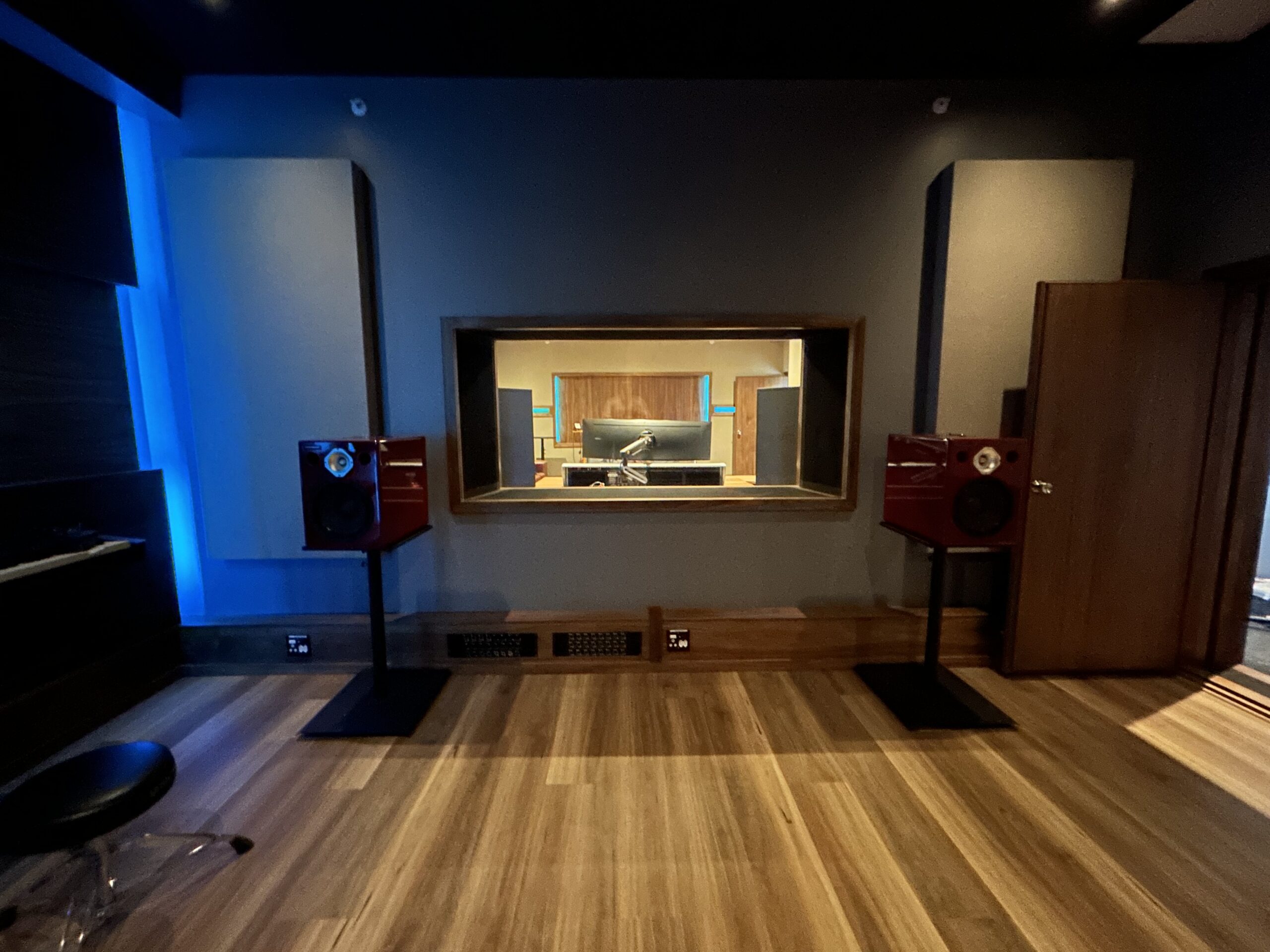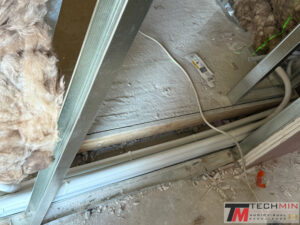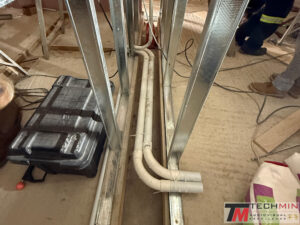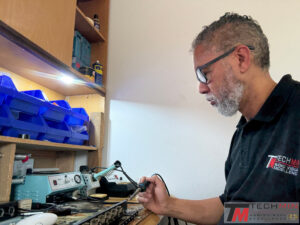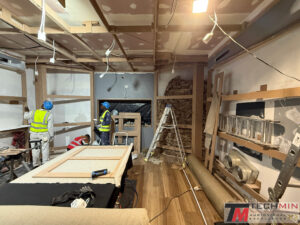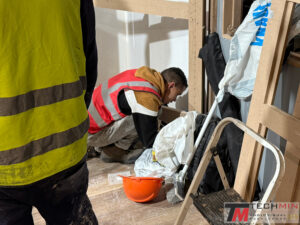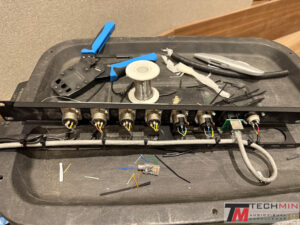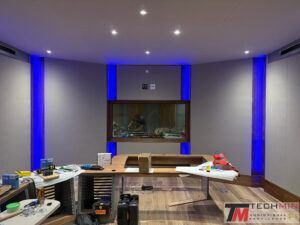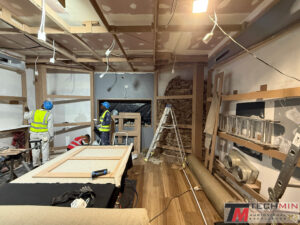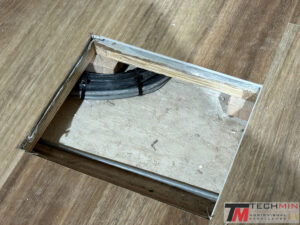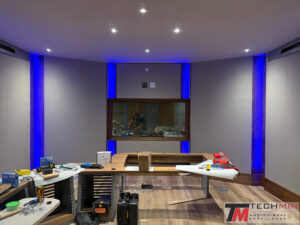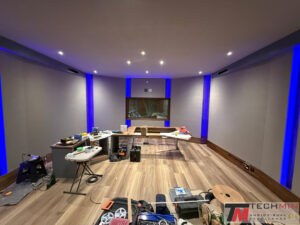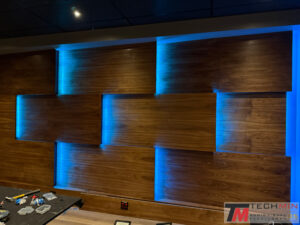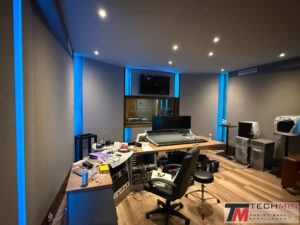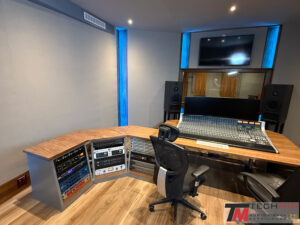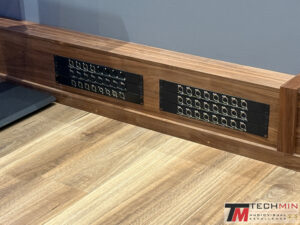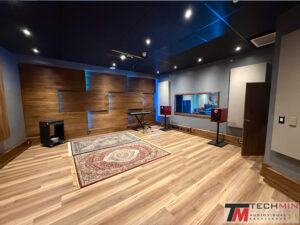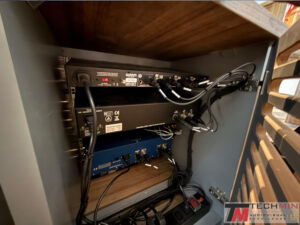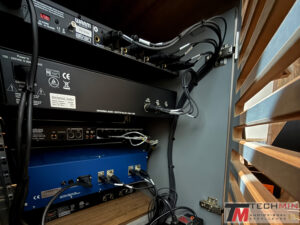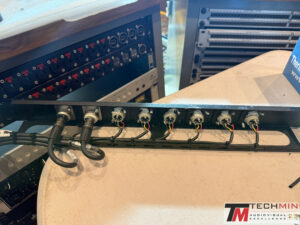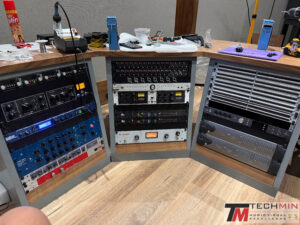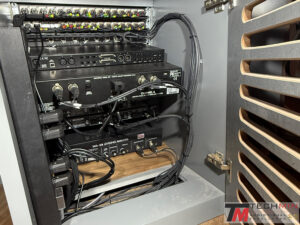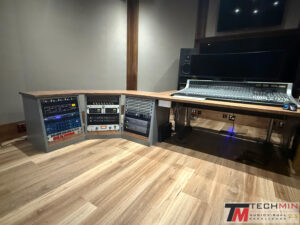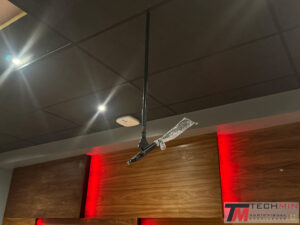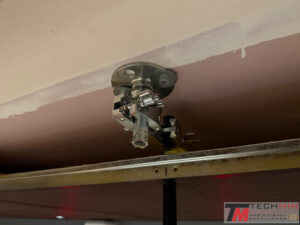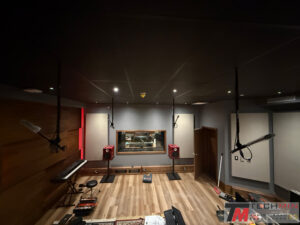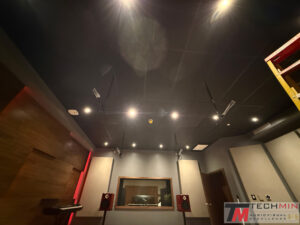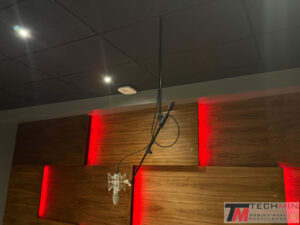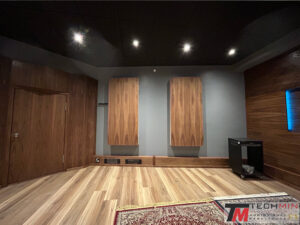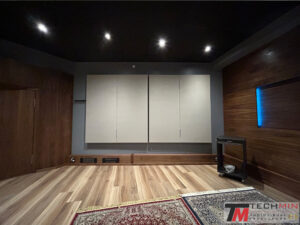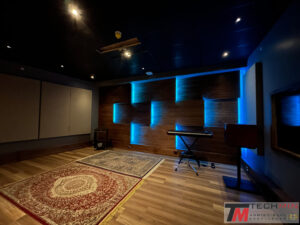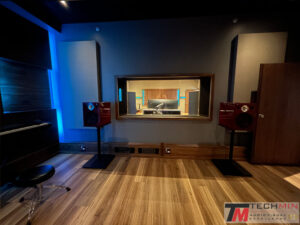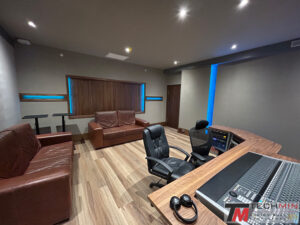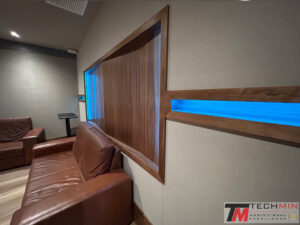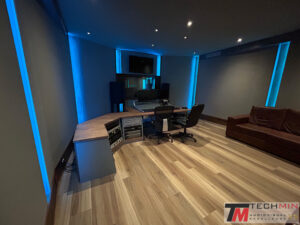Universal Music South Africa
Studio InstallationUniversal Music South Africa: Building a Modern Studio Environment
Our involvement in three consecutive studio builds for Universal Music South Africa has been both a privilege and a professional milestone. Each project has given us the opportunity to refine our expertise, collaborate with skilled partners, and contribute to a world-class music production environment.
Having been entrusted with the cabling at their previous studios, we were already familiar with their technical needs and workflow preferences. This prior experience prepared us well for the new project, an even more modern and ambitious studio facility designed by Benjamin Pro Audio.
The approach combined both innovation and practicality. Where possible, existing equipment was integrated into the new space, and some of the previously installed cabling was reused to save costs. Before this could happen, the previous studio needed to be decommissioned. This meant carefully removing panels and connectors, transporting them off-site, and preparing each component for its role in the new installation. The process was meticulous, ensuring that nothing was damaged or lost along the way.
Universal Music South Africa: Foundations of the Build
As with any studio installation, the first stage of our work revolved around laying the foundation for connectivity. Conduits for input and output points were installed before the construction of the inner and outer shell walls was complete. This timing was critical, as three layers of drywall were being applied to both the inner and outer walls. By installing the conduits while the framework was still exposed, we ensured seamless integration without compromising the integrity of the finished structure.
Attention to detail in this phase was essential. Conduits were installed in a manner that minimised the risk of audio bleed-through, which can occur if cables run directly between rooms. To counter this, the conduits linking the live room and control room were installed in a zigzag pattern rather than in a straight line. This method reduces direct pathways for sound transmission. Once tested, these conduits were sealed to further enhance insulation.
Another key element was avoiding coupling between the inner and outer wall frames. By preventing physical connections between these two structures, we reduced the risk of vibrations or sound energy transferring from one shell to the other. This step is vital in any professional recording environment, as it preserves the acoustic isolation that studios rely on. With the conduits in place and the framework ready, we stepped off-site while the construction team continued building the main structure.
Returning to Universal Music South Africa for Acoustic Installation
Once TMB Acoustics began installing the acoustic structure, our team returned to the site. At this stage, coordination between teams became crucial. With multiple specialists working simultaneously, the space could become crowded. However, having a regular team and a shared goal made collaboration smooth and effective.
Certain cables needed to be in position before the acoustic panels were closed, requiring precise timing and communication between us and the acoustic installation team. This stage was especially important for the integration of LED channeling and strips. Each team’s progress directly influenced the other, so working together ensured that no delays or mistakes occurred.
For this build, the studio designer introduced a change to the LED lighting profiles we typically use. Instead of the usual channelling, corner profiles were installed. This adjustment created a softer and more even reflection of light against the wood panels of the enclosures. The result was both functional and visually appealing, delivering high-quality lighting that enhanced the aesthetic of the space.
Universal Music South Africa: Acoustic Panels and Visual Impact
The live room design included stunning side wall acoustic panels, which not only served their primary purpose of sound treatment but also worked beautifully with our LED system. These panels created an impressive visual backdrop, perfect for filming music videos and presentations. Remarkably, the space was already being used in this way before the installation was even complete, demonstrating its immediate versatility and appeal.
The back wall of the live room was fitted with swingable acoustic panels. This design allowed the wall to function in two modes—either as an acoustically absorbent surface or as a reflective one. The flexibility provided by these movable panels gave the client the ability to adapt the acoustics of the room depending on the recording requirements, whether for vocals, instruments, or larger ensembles.
Another functional feature was the duplication of audio input and return points. These were installed in both the front and back walls of the live room, integrated neatly into the power skirting. This practical solution eliminated the need for running cables across the floor, which can be disruptive in a larger live room. Keeping the floor clear not only improved safety but also made the space easier to configure for different recording sessions.
Desk and Control Room Design
In consultation with the client, a new desk was designed to provide both a sleek appearance and practical functionality. The desk offered sufficient space for all the necessary connections to and from the patch bays, while maintaining a clean and professional finish. One particularly innovative element was a 3D-printed rack created specifically for the Mac Studio, ensuring that even the smallest details of the workspace were carefully considered.
The desk was brought to life by Wood by Design, whose craftsmanship gave the control room a polished yet spacious atmosphere. This space was built not only for functionality but also for comfort, as control rooms often serve as the creative hub where artists, producers, and engineers spend long hours working.
Because some artists prefer to record directly within the control room, additional input and monitoring points were integrated into the power skirting along the right-hand side and back of the room. These panels also included MIDI points, ensuring full compatibility for a wide range of instruments. Similar MIDI points were installed in the live room, supporting modern music production workflows.
Recognizing the increasing importance of digital infrastructure, we also included network points with CAT6e cabling. All of these converged into a server cabinet located outside the studio, allowing for flexible inter-patching of these points. This infrastructure ensured that the studio was prepared for the growing trend of IP-based systems in professional audio production.
Universal Music South Africa: Innovation with Overhead Microphones
One unique request from the client on this build was the installation of overhead microphones in the live room. Initially, the plan was to add microphone points against the ceiling. However, this concept evolved into a more practical and visually pleasing solution. Heavy-duty Samson microphone boom stands were mounted using Gibraltar drum cymbal clamps, which were securely attached to the upper ceiling panels.
This approach allowed for stable, overhead microphone placement without cluttering the floor. The design was particularly effective for recording drums and choirs, where multiple microphones are needed and floor space must remain clear. All cabling for the overhead microphones was routed directly to the patch bay, ensuring straightforward integration with the rest of the system.
Dolby Atmos Readiness
Future-proofing was another key consideration in this build. The studio was made Dolby Atmos ready, with all necessary cabling installed to support both active and passive speaker configurations for surround sound. Outlets for floor-level surround speakers were integrated into the power skirting, while ceiling panels were fitted with cables for height channels.
This infrastructure ensures that the studio can transition smoothly into a Dolby Atmos mastering facility when required. By preparing for this technology in advance, the studio is well-positioned to meet evolving industry demands without the need for costly and disruptive retrofits later on.
Our third consecutive project with Universal Music South Africa represents more than just another studio build. It highlights the value of long-term collaboration, thoughtful design, and meticulous execution. From the reuse of existing equipment and cabling to the introduction of innovative features such as swingable acoustic panels, overhead microphone integration, and Dolby Atmos readiness, every decision was guided by practicality, functionality, and future adaptability.
The result is a modern studio facility that meets the demanding requirements of today’s music industry while providing flexibility for future developments. Working alongside Benjamin Pro Audio, TMB Acoustics, and Wood by Design, we were able to deliver a space that not only supports technical excellence but also inspires creativity. This project demonstrates how careful planning, teamwork, and attention to detail can transform a vision into a reality, ensuring that Universal Music South Africa continues to set the standard for professional music production.

